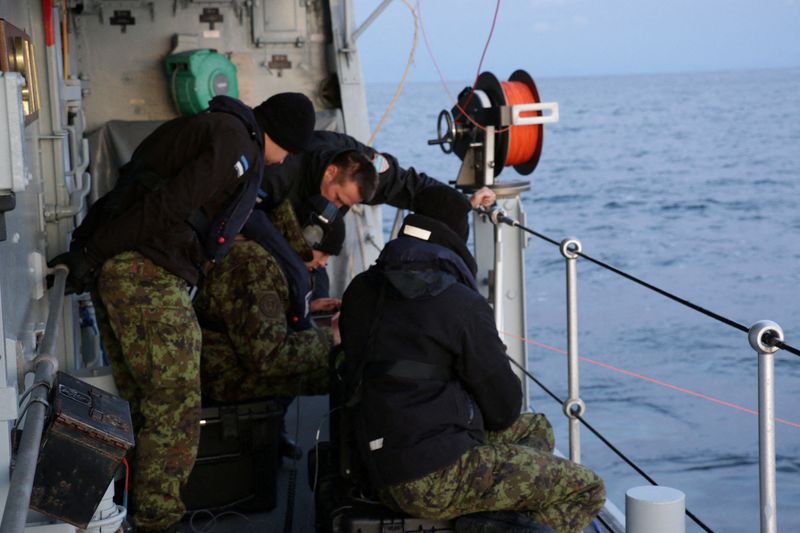By Anne Kauranen
HELSINKI (Reuters) – The navies of Britain, Finland and Estonia exercised protection of undersea infrastructure in the Baltic Sea region together with the Finnish Border Guard on Monday, the Finnish military said in a statement.
In early October, a gas pipeline connecting Estonia and Finland was damaged, as were three telecommunications cables in the area, which is known for its dense seabed infrastructure.
Finland and Estonia suspect the gas pipeline and cable incidents are linked, and believe a Hong Kong-flagged container ship caused the damage by dragging its anchor across the seabed. China has said it is willing to provide the necessary information in accordance with international law.
The aim of the joint exercise, which will continue on Tuesday, is to develop capabilities for the surveillance and protection of undersea infrastructure and to counter undersea military threats, Finland said.
“After the Balticconnector incident, many countries in the Baltic Sea region have increased their cooperation and their own national maritime surveillance operations,” said Commodore Janne Huusko of the Finnish Defense Command.
All three participants are members of the NATO military alliance, but the exercise takes place within the framework of their defense cooperation Joint Expeditionary Force (JEF), which includes the Nordic and Baltic states, the Netherlands and Great Britain.
Britain said on Thursday it would send seven Royal Navy ships and a maritime patrol aircraft to take part in JEF patrols in the region in December.

In October, Britain had said it planned to increase its military presence in northern Europe, including deploying 20,000 troops to the region next year, to help protect critical infrastructure at a time of growing concern about Russian sabotage.
The Baltic Sea was also the scene last year of the destruction of the Nord Stream gas pipelines from Russia to Germany, which investigators say was deliberately blown up, although they have not yet named a suspect.


